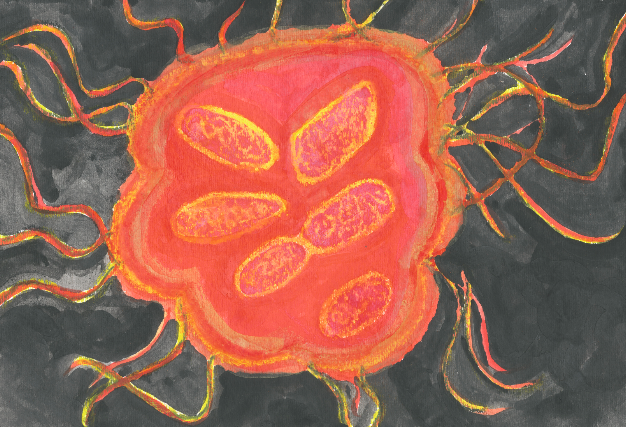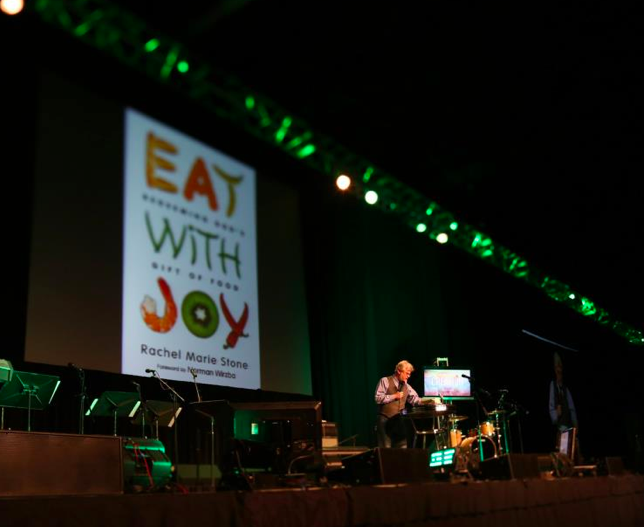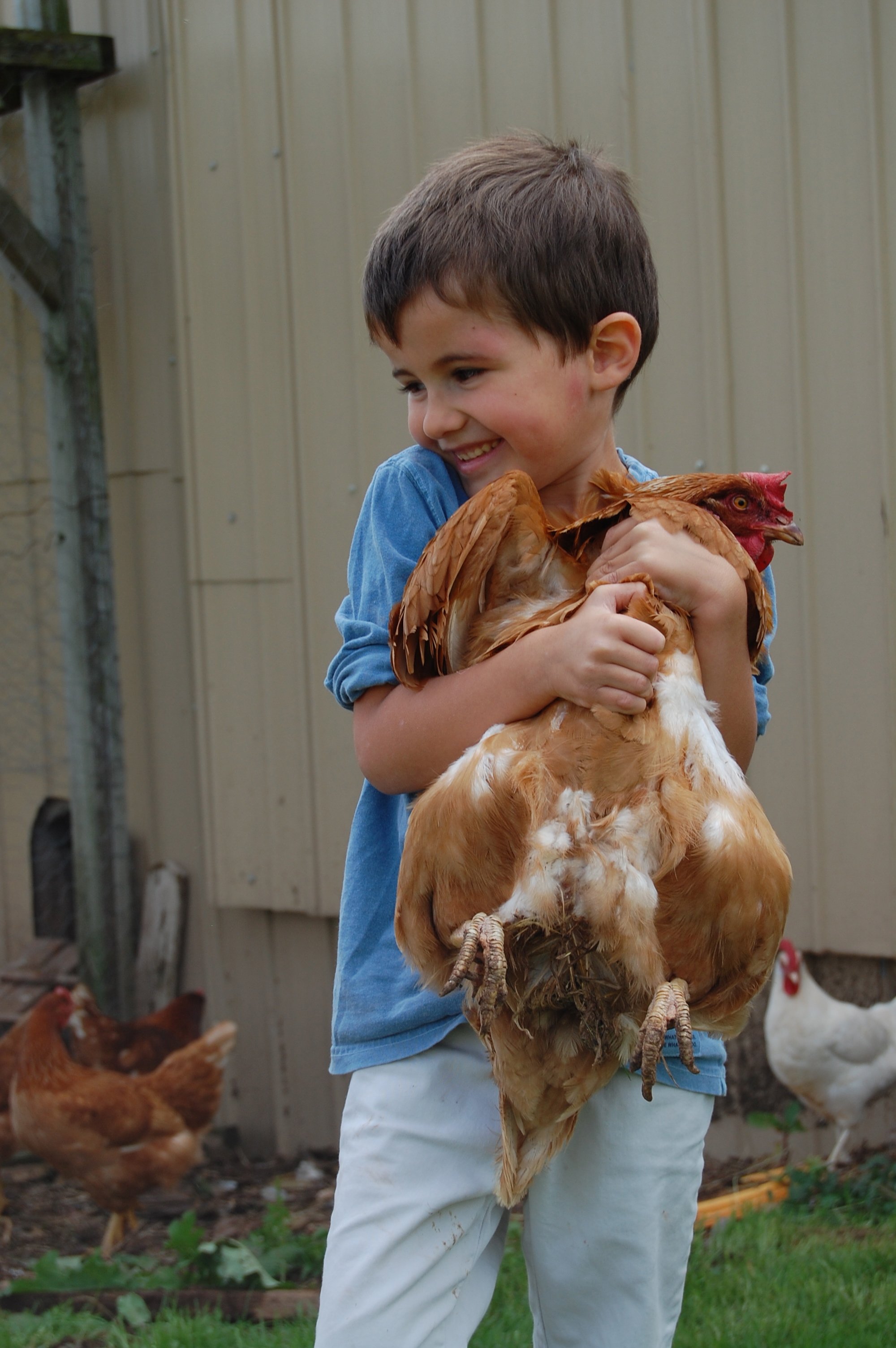While I’m away, I’ve been posting essays, reviews, and articles that have either appeared elsewhere on the Web or else have never before been seen! This one originally appeared in Catapult, but was written more than three years ago…still, the story’s worth telling, I think…
{Part Two}
A recently-published book that presents itself as a guide to raising a “green” baby seems to suggest that “green” parenting is all about purchasing the right products: the organic sleepers, the low-VOC nursery paints and the petrochemical-free baby wash. Though consumption of these products probably has a place, I want to think that we can do more for our children than simply teach them which products to buy. Certainly, I don’t want to use a toxic baby shampoo on my newborn. And, on balance, I do think that diapering with cloth is better for his health and for that of the planet. But if I am concerned about the future — of the earth and of my sons as they make their way upon it — I need a vision of sustainable parenting that goes beyond yet another consumer choice.
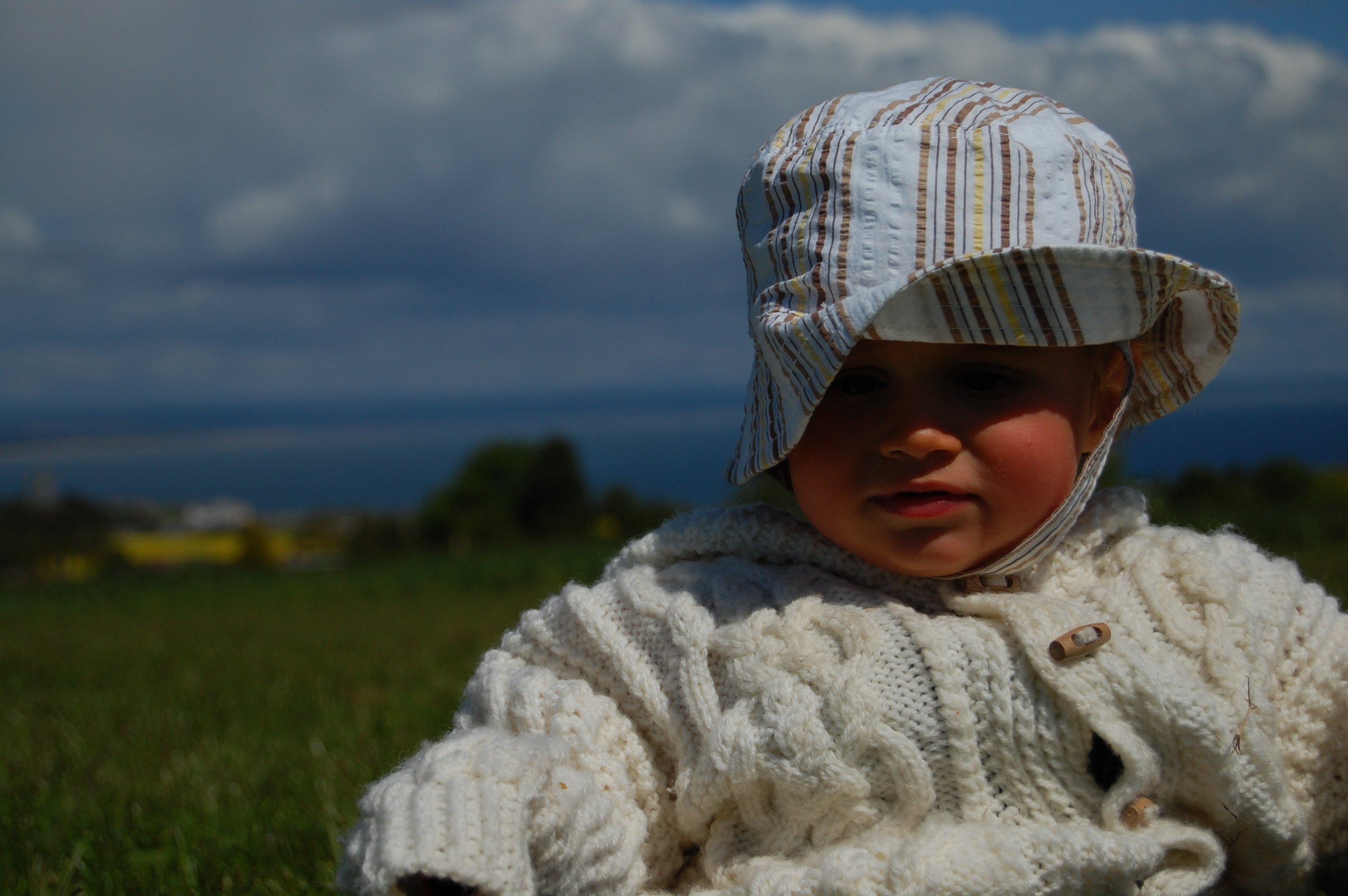 I think sustainable parenting should begin with the Creation narrative — that God created the world and declared it “good” should call us to affirm its goodness with respect and thanksgiving. As we teach our children about God, we should not neglect teaching them about God’s Creation. From there, it’s important, I think, to combat what Richard Louv has called “nature deficit disorder.” Even if you live in the city, it’s possible to help your children enjoy the outdoors: take them to the park or playground and point out plants, flowers, and birds. They may surprise you with what they can learn and remember. My toddler can distinguish several species of bird, for example, and knows the names of a few flowers. Providing books with quality illustrations of animals and landscapes can also help instill a sense of wonder, as can carefully selected nature documentaries, such as the BBC’s Planet Earth series. If we want our children to care for and protect God’s creation, we must teach them both about God and his creation. They won’t be able to love either without first knowing something about each.
I think sustainable parenting should begin with the Creation narrative — that God created the world and declared it “good” should call us to affirm its goodness with respect and thanksgiving. As we teach our children about God, we should not neglect teaching them about God’s Creation. From there, it’s important, I think, to combat what Richard Louv has called “nature deficit disorder.” Even if you live in the city, it’s possible to help your children enjoy the outdoors: take them to the park or playground and point out plants, flowers, and birds. They may surprise you with what they can learn and remember. My toddler can distinguish several species of bird, for example, and knows the names of a few flowers. Providing books with quality illustrations of animals and landscapes can also help instill a sense of wonder, as can carefully selected nature documentaries, such as the BBC’s Planet Earth series. If we want our children to care for and protect God’s creation, we must teach them both about God and his creation. They won’t be able to love either without first knowing something about each.
 As we meet our children’s basic physical needs — food, clothing and shelter — we can build upon their understanding of God and his creation, and teach them to recognize the effects our consumption have upon the earth. If you can take your child to the farmer’s market or to a farm, she will learn that food comes from the earth before it comes to the supermarket. Even better, grow a garden with her, even if it’s just an indoor herb garden. That’s all we have the space for right now, and my toddler gets a kick out of seeing freshly plucked leaves of basil go into his pasta sauce. Eating locally helps develops a sense of connection to and dependence upon the earth, and eating seasonally helps develop a sense for the rhythm of the year — it’s strawberry time, it’s pumpkin time, and so on. Also, it teaches our children (and us!) the virtue of patience as we wait for the strawberries and for the lettuce. In her advocacy for local and seasonal eating, Barbara Kingsolver pokes fun at the parent who insists that his child save sex for marriage yet can’t himself “wait for the right time to eat a tomato.”
As we meet our children’s basic physical needs — food, clothing and shelter — we can build upon their understanding of God and his creation, and teach them to recognize the effects our consumption have upon the earth. If you can take your child to the farmer’s market or to a farm, she will learn that food comes from the earth before it comes to the supermarket. Even better, grow a garden with her, even if it’s just an indoor herb garden. That’s all we have the space for right now, and my toddler gets a kick out of seeing freshly plucked leaves of basil go into his pasta sauce. Eating locally helps develops a sense of connection to and dependence upon the earth, and eating seasonally helps develop a sense for the rhythm of the year — it’s strawberry time, it’s pumpkin time, and so on. Also, it teaches our children (and us!) the virtue of patience as we wait for the strawberries and for the lettuce. In her advocacy for local and seasonal eating, Barbara Kingsolver pokes fun at the parent who insists that his child save sex for marriage yet can’t himself “wait for the right time to eat a tomato.”
 When it comes to clothing and shelter and other kinds of consumption, instilling the virtue of voluntary simplicity will be easier if we ourselves have learned to be content with what we have. And although we should be careful not to burden young children with guilt, exploring together how other children around the world live — and that the planet cannot support all of us living as most Westerners do — can be a way to help curb consumptive desire. UNICEF has a beautifully illustrated book for children ages nine to 12 called A Life Like Mine that provides a positive, though sobering, perspective on children’s lives around the world. Mick Inkpen and Nick Butterworth’s Wonderful Earth! is a funny, sobering, and hopeful meditation on the wonder of God’s handiwork and the need to care for creation. Books and stories that value simplicity, creativity and thrift, like the Little House series, can also help a child to value these things over unnecessary consumption.
When it comes to clothing and shelter and other kinds of consumption, instilling the virtue of voluntary simplicity will be easier if we ourselves have learned to be content with what we have. And although we should be careful not to burden young children with guilt, exploring together how other children around the world live — and that the planet cannot support all of us living as most Westerners do — can be a way to help curb consumptive desire. UNICEF has a beautifully illustrated book for children ages nine to 12 called A Life Like Mine that provides a positive, though sobering, perspective on children’s lives around the world. Mick Inkpen and Nick Butterworth’s Wonderful Earth! is a funny, sobering, and hopeful meditation on the wonder of God’s handiwork and the need to care for creation. Books and stories that value simplicity, creativity and thrift, like the Little House series, can also help a child to value these things over unnecessary consumption.
 But again, I think our teaching must be mostly without words. We must embody the values we wish our children to embody. But it’s equally important, I think, to enjoy the things we wish our children to embody — and the things we want them to enjoy! It’s one thing to tell a child how important it is to eat local food; it’s entirely another to explore a farmer’s market together, and then to give thanks to God for a delicious shared local meal. Let them see your genuine joy as you choose simplicity, as you seek out earth-friendly alternatives and as you reduce your consumption generally. Perhaps the best way to teach our children to care for the earth is simply to demonstrate our love for God, our love for our neighbors and our love and respect for the creation. We should love our children enough to love these things; by loving them, we will teach them. My children helped me to begin to care for God’s creation; it’s my turn to help them do likewise.
But again, I think our teaching must be mostly without words. We must embody the values we wish our children to embody. But it’s equally important, I think, to enjoy the things we wish our children to embody — and the things we want them to enjoy! It’s one thing to tell a child how important it is to eat local food; it’s entirely another to explore a farmer’s market together, and then to give thanks to God for a delicious shared local meal. Let them see your genuine joy as you choose simplicity, as you seek out earth-friendly alternatives and as you reduce your consumption generally. Perhaps the best way to teach our children to care for the earth is simply to demonstrate our love for God, our love for our neighbors and our love and respect for the creation. We should love our children enough to love these things; by loving them, we will teach them. My children helped me to begin to care for God’s creation; it’s my turn to help them do likewise.
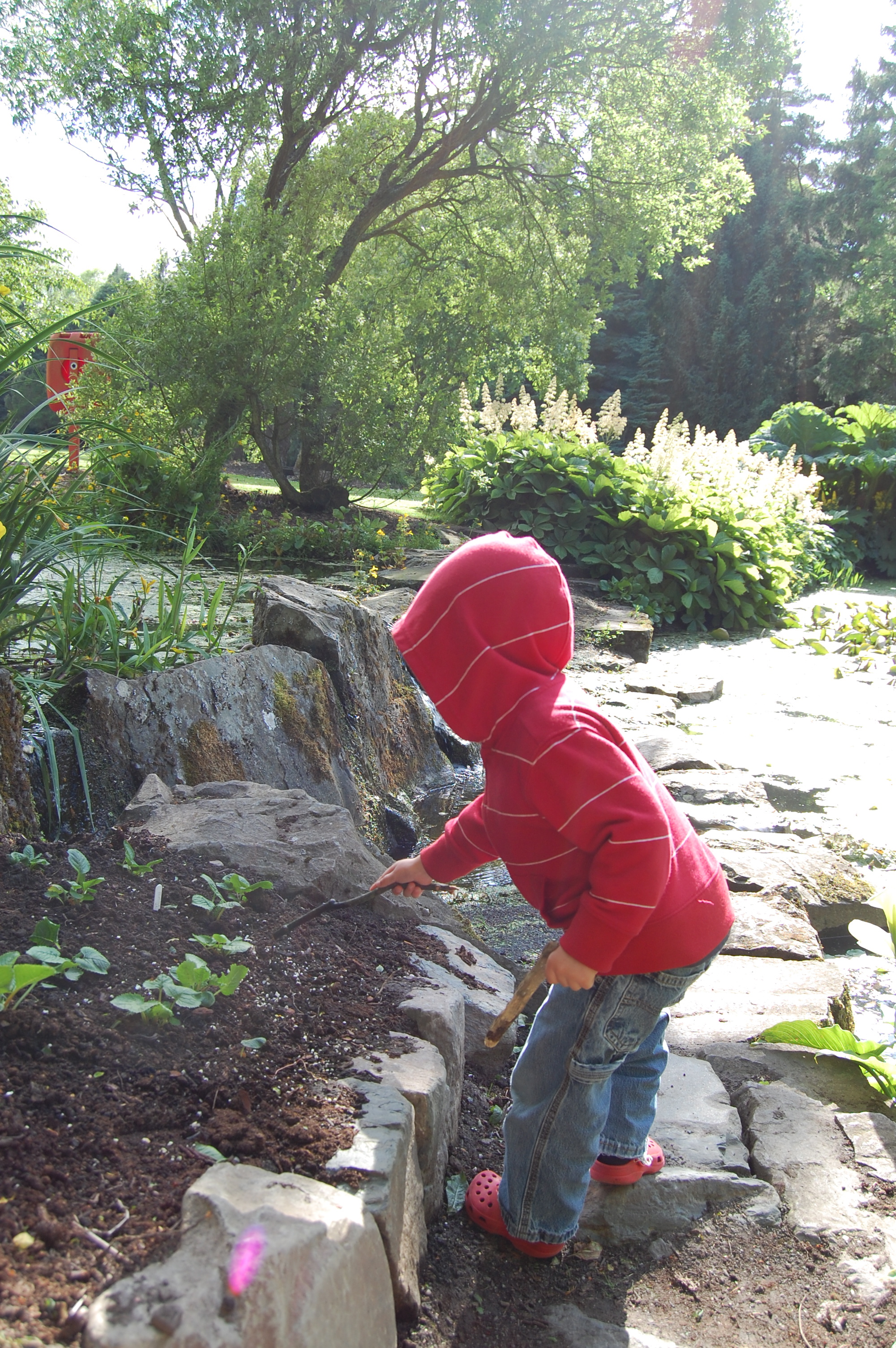 Author’s Note: I wrote this piece over three years ago, when my children were really small. As I read back over what I’ve written here, I realize how much they’ve continued to teach me. Aidan, now an inquisitive six-year-old, routinely asks me things like, “Do motorcycles make carbon dioxide?” and, “When will it be cucumber time?” I’m so grateful to see how even some of my puniest efforts to live more lightly — sewing and repairing clothes, canning my own jam and growing a huge veggie garden — have inspired my boys to adopt a “can-do,” DIY spirit, a spirit that sends them outdoors to design imaginary gardens and rescue worms (“We need them for the soil!”) and to cardboard boxes, tape and string instead of to the toy store. I’m grateful that they have the freedom to create and delight in Creation, and I hope that in 30 years, they’ll be living in such a way so as to help bring a similar kind of freedom to the millions of children who don’t yet have it.
Author’s Note: I wrote this piece over three years ago, when my children were really small. As I read back over what I’ve written here, I realize how much they’ve continued to teach me. Aidan, now an inquisitive six-year-old, routinely asks me things like, “Do motorcycles make carbon dioxide?” and, “When will it be cucumber time?” I’m so grateful to see how even some of my puniest efforts to live more lightly — sewing and repairing clothes, canning my own jam and growing a huge veggie garden — have inspired my boys to adopt a “can-do,” DIY spirit, a spirit that sends them outdoors to design imaginary gardens and rescue worms (“We need them for the soil!”) and to cardboard boxes, tape and string instead of to the toy store. I’m grateful that they have the freedom to create and delight in Creation, and I hope that in 30 years, they’ll be living in such a way so as to help bring a similar kind of freedom to the millions of children who don’t yet have it.


